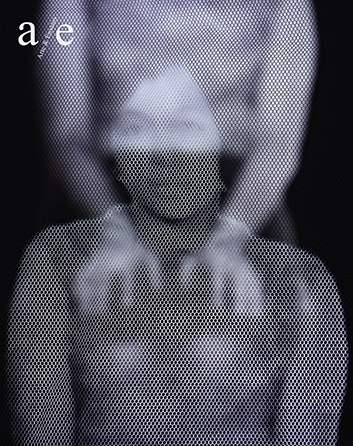Zona cinza ou para além do cubo branco e da caixa preta
DOI:
https://doi.org/10.60001/ae.n47.3Resumen
O crescente aumento de instalações de imagem em movimento nos ambientes expositivos no início dos anos 2000 trouxe a discussão da migração das imagens do cinema para a arte contemporânea, que ocorreu, principalmente, por seu viés econômico. Além dos conceitos de cubo branco e caixa preta, instâncias controladoras e disciplinadoras dos corpos, o artigo apresenta a expressão zona cinza, como lugar de conflito, confluência e assentamento de questões do audiovisual em exposições, em especial, as de grande formato e temporárias, como as bienais.
Palavras-chave:
Zona cinza. Instalação de imagem em movimento. Audiovisual. Bienal de São Paulo. Biennale di Venezia.
Descargas
Citas
BALSOM, Erika. Editioning the moving image: old problems and new possibilities. [Barcelona, s.n.], 2015. 1 video (54 min). Publicado pelo canal Loop Barcelona. Disponível em: https://www.youtube.com/watch?v=g0VyIwlIVpY&t=1367s. Acesso em: 10 fev. 2024.
BALSOM, Erika. Exhibiting cinema in contemporary art. Amsterdam: Amsterdam University Press, 2013.
BARAÚNA, Danilo Nazareno Azevedo. Besideness: distance and proximity as queer disorientation to inhabit projective moving image installations. Frames Cinema Journal, v. 20, p. 37-66, 2022.
BARTHES, Roland. En sortant du cinema. Communications: Psychanalyse et Cinéma, n. 23, p. 104-107, 1975. Disponível em: https://www.persee.fr/doc/comm_0588-8018_1975_num_23_1_1353. Acesso em: 5 ago. 2020.
BISHOP, Claire. Black box, white cube, gray zone: dance exhibitions and audience attention. Project MUSE. TDR: The Drama Review, Baltimore, v. 62, n. 2, p. 22-42, 2018.
ELSAESSER, Thomas. Cinema como arqueologia das mídias. São Paulo: Edições Sesc-São Paulo, 2018.
FILIPOVIC, Elena. The global white cube. On Curating: Politics of Display, Zürich, n. 22, p. 45-60, 2014.
FLUSSER, Vilém. Filosofia da caixa preta: ensaios para uma filosofia da fotografia. São Paulo: É Realizações Editora, 2018.
ILES, Chrissie (org.). Into the light: the projected image in American art 1964-1977. New York: Whitney Museum, 2001.
KLEE, Paul. Paul Klee. Nova York: Parkstone International, 2015.
O’DOHERTY, Brian. No interior do cubo branco: a ideologia do espaço da arte. São Paulo: Martins Fontes, 2002.
PAÏNI, Dominique. Reflexões sobre o “cinema exposto”. In: MACIEL, Katia (org.). Cinema sim. São Paulo: Itaú Cultural, 2008.
PANTENBURG, Volker. Sobre o passado do cinema no presente da arte – instalações de Harun Farocki. In: MOURÃO, Maria Dora G.; BORGES, Cristian; MOURÃO, Patrícia (orgs.). Harun Farocki: por uma politização do olhar. São Paulo: Cinemateca Brasileira, 2010.
PENA, Victor Hermann Mendes. Zona cinza: como perceber a catástrofe? Tese (Doutorado em Teoria da Literatura e Literatura Comparada) – Faculdade de Letras, Universidade Federal de Minas Gerais, 2020.
SMITHSON, Robert. A cinematic utopia. Artforum, New York, v. 26, p. 53-55, 1971.
SITNEY, Sky. The search for the invisible cinema. Grey Room, n. 19, 2005.
UROSKIE, Andrew. Between the black box and the white cube: expanded cinema and postwar art. Chicago/London: University of Chicago Press, 2014.
Descargas
Publicado
Número
Sección
Licencia
Derechos de autor 2024 arte e ensaios

Esta obra está bajo una licencia internacional Creative Commons Atribución 4.0.
Autores que publicam nesta revista concordam com os seguintes termos:- Autores mantém os direitos autorais e concedem à revista o direito de primeira publicação, com o trabalho simultaneamente licenciado sob a Licença Creative Commons Attribution que permite o compartilhamento do trabalho com reconhecimento da autoria e publicação inicial nesta revista.
- Autores têm autorização para assumir contratos adicionais separadamente, para distribuição não-exclusiva da versão do trabalho publicada nesta revista (ex.: publicar em repositório institucional ou como capítulo de livro), com reconhecimento de autoria e publicação inicial nesta revista.
- Autores têm permissão e são estimulados a publicar e distribuir seu trabalho online (ex.: em repositórios institucionais ou na sua página pessoal) a qualquer ponto antes ou durante o processo editorial, já que isso pode gerar alterações produtivas, bem como aumentar o impacto e a citação do trabalho publicado (Veja O Efeito do Acesso Livre).


